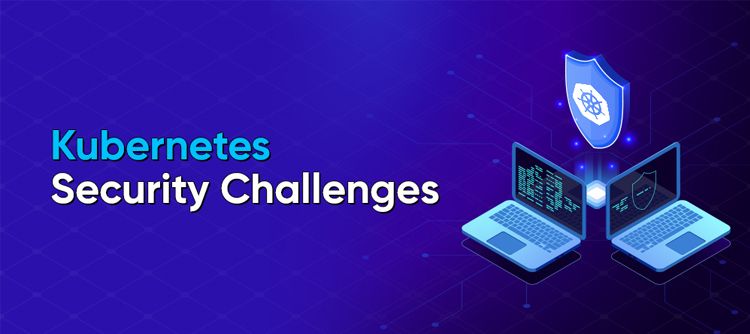
Subscribe to our Blog
We're committed to your privacy. SayOne uses the information you provide to us to contact you about our relevant content, products, and services. check out our privacy policy.

Renjith RajAugust 29, 202211 min read

Generating table of contents...
Kubernetes, for the unversed, is an open-source container management platform that helps to automate manual processes related to deployment, managing, and scaling containerized applications. Containers help people run different kinds of applications in different environments.
Containers are a good way to run applications. In any application, containers have to be run in such a way that there is no downtime. That is, if one container fails to work, another needs to start. You will have to communicate to a server to launch a container and then communicate to the next server to launch another container. This would be much easier with a system. Thus, Kubernetes provides us with an interface that helps us to run systems smoothly.
Download our eBook and Read it for FREE “Choose the best microservices vendor and trim the costs”.
There are some key factors that you should consider when migrating to Kubernetes.
Migrating to Kubernetes is specific to existing architectures (such as monoliths, Docker Swarm, or VMs) and is an evolutionary journey. For migrating from monolith to Kubernetes, there is likely to be an immense change in complexity. Monolith applications are easy to debug and test, and their deployment is also easy because of their simplicity. They facilitate faster end-to-end testing. During this kind of migration, not all existing workloads may be ready to move to containers. You should know which workloads to move and which applications can or cannot be containerized.
Read our blog “How Kubernetes Works to Support Microservices Architecture”.
Migrating from Docker Swarm is relatively easier compared to moving from monolith architecture applications because container-based applications are already present. Swarm is simpler and easy to operate; Kubernetes is more complicated and has a steep learning curve. For this migration, the nature of current infrastructure, governance, networking and storage management, configuration and scale, identity and access controls, and customer-specific applications and integrations have to be considered.
Migrating directly from VMs to Kubernetes may appear to be tough. However, this is now easier when using the open-source project KubeVirt, which enables VM workloads to be run as pods inside Kubernetes clusters. It provides a unified platform for the deployment of applications based on VMs and booth containers in a shared, common environment.
If you want to establish microservices architecture in your organization, speak to our expert developers today!
When you deploy Kubernetes, it is important that you understand the potential risks so that you can manage them.
1. Security
This is one of Kubernetes' greatest challenges because of the complexity and associated vulnerability. If not properly monitored, identifying vulnerabilities can become difficult. When there are multiple containers deployed, it is difficult to detect vulnerabilities. This may make it easy for hackers to break into the system.
You can do the following to avoid these security challenges.
2. Networking
Traditional networking approaches cannot be easily integrated with Kubernetes. As a result, some problem areas are complexity and multi-tenancy.
When deployment spans more than one cloud infrastructure, Kubernetes is very complex. This can happen when workloads from different architectures such as VMs and Kubernetes.
Static IP addresses and ports on Kubernetes can also cause such issues. Implementing IP-based policies is difficult because pods use an infinite number of IPs in a workload.
Read our blog : How to hire the best Kubernetes developers
Multi-tenancy problems occur when multiple workloads share resources. If resources are improperly allocated, other workloads may be affected in the environment.
The CNI (container network interface) plug-in is used to solve networking challenges. This enables Kubernetes to integrate into the infrastructure seamlessly and access applications on different platforms. A service mesh can also be used to solve the issue. This is an infrastructure layer inserted in an app that handles network-based communication via APIs.
3. Interoperability
Interoperability sometimes is a significant Kubernetes issue. When interoperable cloud-native apps on Kubernetes are enabled, communication between the apps can get tricky. This affects the deployment of clusters, as the app instances it contains may have issues when executing on individual nodes in the cluster.
Read our blog : Why Business leaders should care about Microservices
Kubernetes does not work as well in production as in development, staging, or quality assurance (QA). Migrating to an enterprise-class production environment can also create many complexities in governance, performance, and interoperability.
The following measures can be implemented to reduce the interoperability challenges:
4. Storage
Storage becomes an issue with Kubernetes for larger organizations, especially those that have on-premises servers. One reason is that they manage the entire storage infrastructure without relying on any cloud resources. This more often leads to vulnerabilities and memory crises.
The best solution to overcome these problems is moving to a public cloud environment and reducing reliance on local servers. Other solutions are:
5. Scaling
If an organization’s infrastructure is poorly equipped to increase the scope of its operations, this is a major disadvantage. Kubernetes microservices are complex and generate a lot of data, diagnosing and fixing any problem is a scary task.
Scaling seems impossible without automation. For any business, outages are damaging to both revenue and user experience. Customer-facing services that depend on Kubernetes also suffer a hit.
Read our blog : Developing Microapps using Microservices Architecture – An overview
The dynamic nature of the computing environment and the density of applications make the problem worse for organizations. There would be:
You can solve the scaling problem in Kubernetes by using autoscaling or v2beta2 API version as it allows you to specify multiple metrics to scale the horizontal pod autoscaler.
Read our blog : 5 Things Enterprises Should Know about Microservices Architecture
You can also choose an open-source container manager to run Kubernetes in production. This helps manage and scale applications hosted on-premises or on the cloud. Some functions of these container managers are:
With several companies depending on cloud computing and containerization today, many IT organizations provide Kubernetes consulting services to help businesses manage their containers. Having an outsourced Kubernetes provider is helpful in many ways for companies these days.
A Kubernetes system is intricate and many companies that embraced Kubernetes find it difficult to cope with new updates and extensions added to Kubernetes now and then because it is evolving rapidly. This is one reason to seek the expertise of Kubernetes consultants.
Kubernetes is a demanding technology but has great potential. Containerization is a complex affair and a Kubernetes consulting provider would let companies understand the best practices to leverage containers and blend them with their DevOps efforts.
IT companies are now into digital transformation by adopting the latest technologies. They want to get the best out of Kubernetes. By hiring a Kubernetes expert and together with their in-house team, companies want to achieve digital transformation quickly and smoothly. Here, it is important to understand the kind of container technology that suits their products/requirements. Many containerization products are available in the market: Openshift, Mesos or Docker Swarm. Finding the best one may not be an easy job.
Though no technology can provide 100% security, embracing Kubernetes into your system can put you to ease. Kubernetes provides a tremendous amount of security. Generally, companies trying to automate their container management face technical issues and probably a few disasters. If these are ignored, they can be a great threat to the security and storage of the whole system.
Read our blog : Building Microservices Application Using Spring Boot & Cloud
The storage features of Kubernetes are complex with the arrival of the Container Storage Interface in the recent beta implementations. The security of Kubernetes is challenging because of the stateless nature of the platform. To have top-notch security in the system you should have up-to-date Kubernetes knowledge. If companies fail in this aspect, the access privileges and running applications can begin to malfunction. Though used by companies, the security threats of Kubernetes vary from one to another. This is because different companies have different goals and inclinations.
By running Kubernetes appropriately, you can master the art of containerization. However, many organizations are looking to hire expert consulting firms because of both internal and external factors. The major challenges are security and storage issues while managing Kubernetes.
Do you want to overcome business bottlenecks by implementing microservices? Talk to us today!
At SayOne, our integrated teams of developers service our clients with microservices that are fully aligned to the future of the business or organization. The microservices we design and implement are formulated around the propositions of Agile and DevOps methodologies. Our system model focuses on individual components that are resilient, fortified, and highly reliable.
We design microservices for our clients in a manner that assures future success in terms of scalability and adaptation to the latest technologies. They are also constructed to accept fresh components easily and smoothly, allowing for effective function upgrades in a cost-effective manner.
Our microservices are constructed with reusable components that offer increased flexibility and offer superior productivity for the organization/business. We work with start-ups, SMBs, and enterprises and help them to visualise the entire microservices journey and also allow for the effective coexistence of legacy systems of the organization.
Our microservices are developed for agility, efficient performance and maintenance, enhanced performance, scalability, and security.

We're committed to your privacy. SayOne uses the information you provide to us to contact you about our relevant content, products, and services. check out our privacy policy.

About Author
Chief Technology Officer @ SayOne Technologies | Conversational AI, LLM

We collaborate with visionary leaders on projects that focus on quality